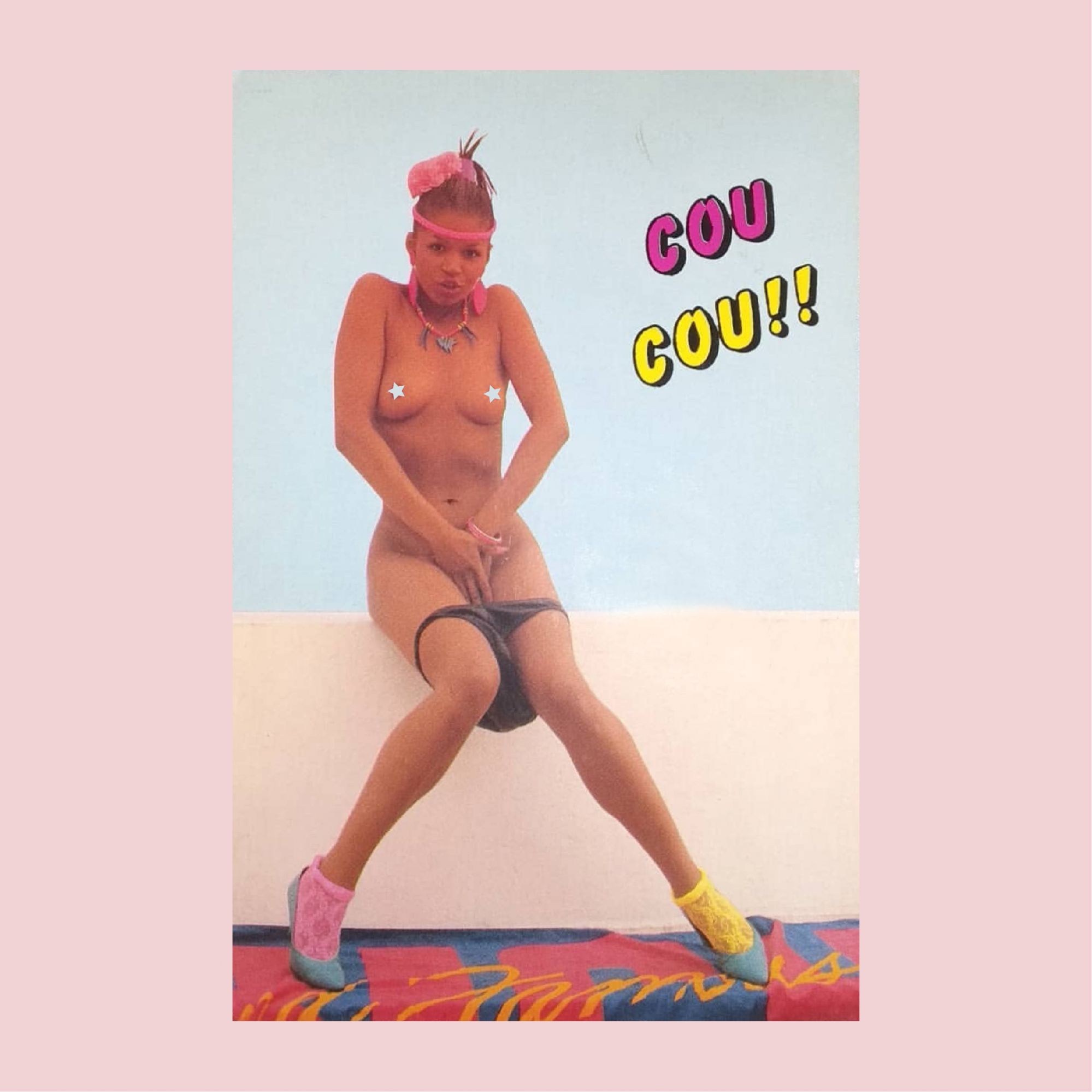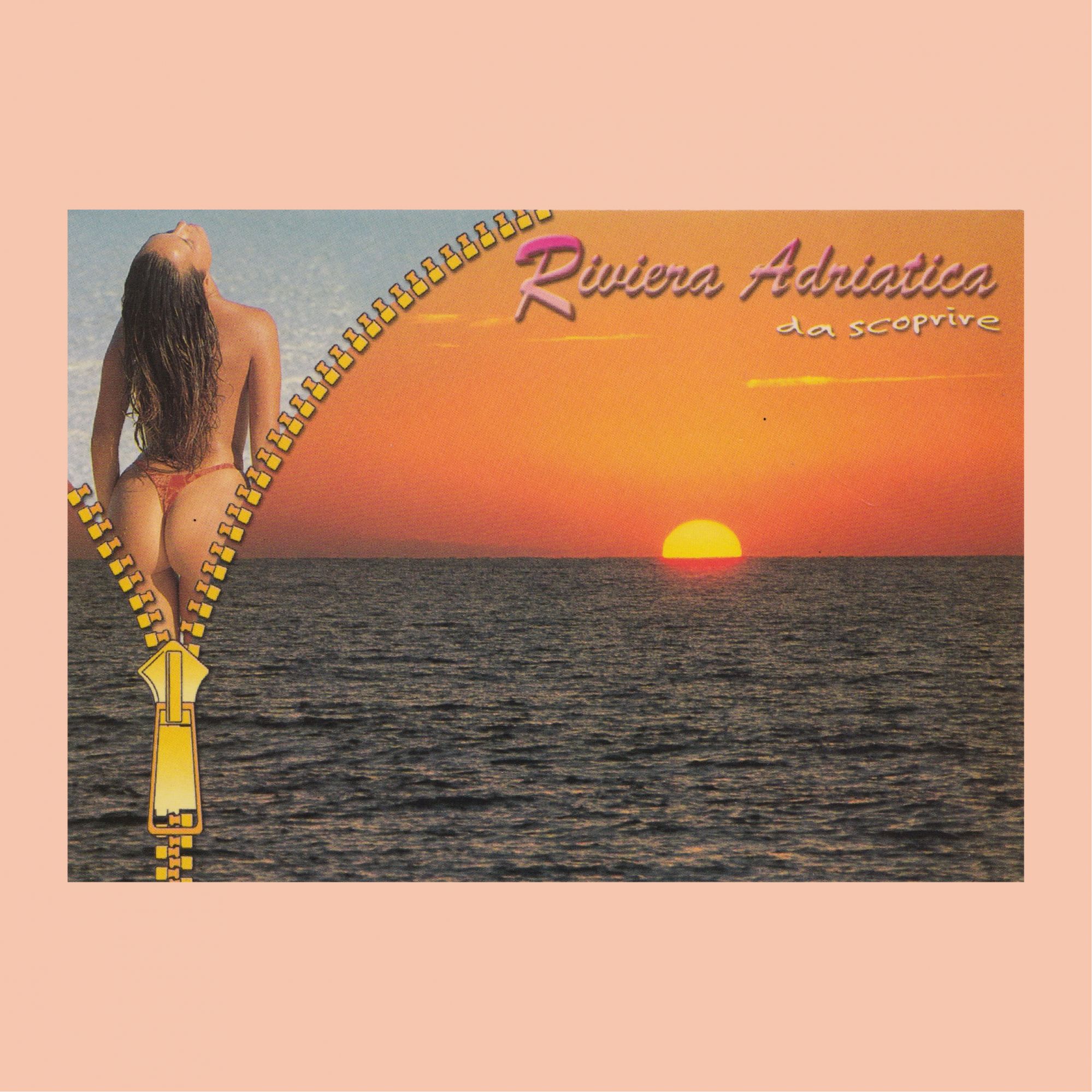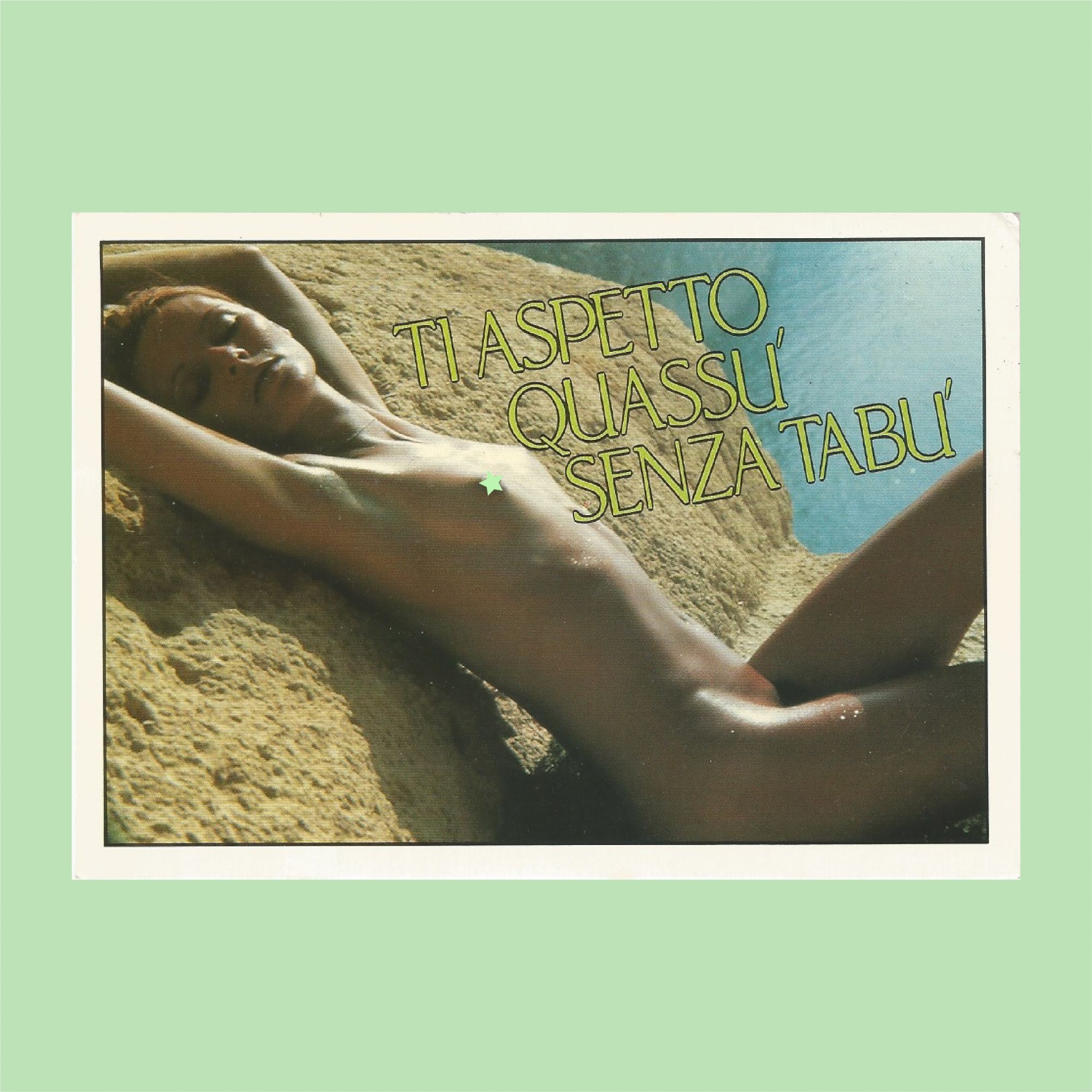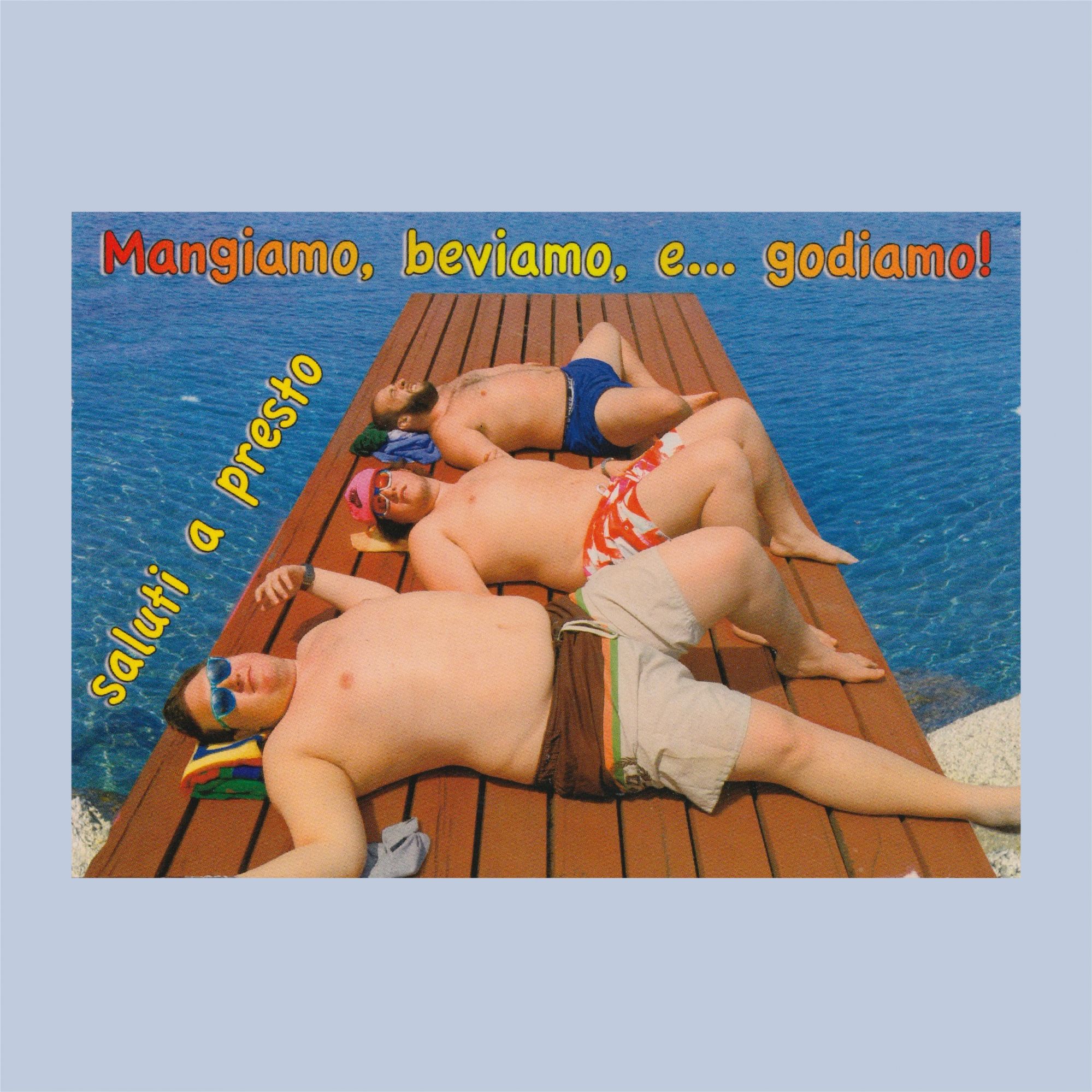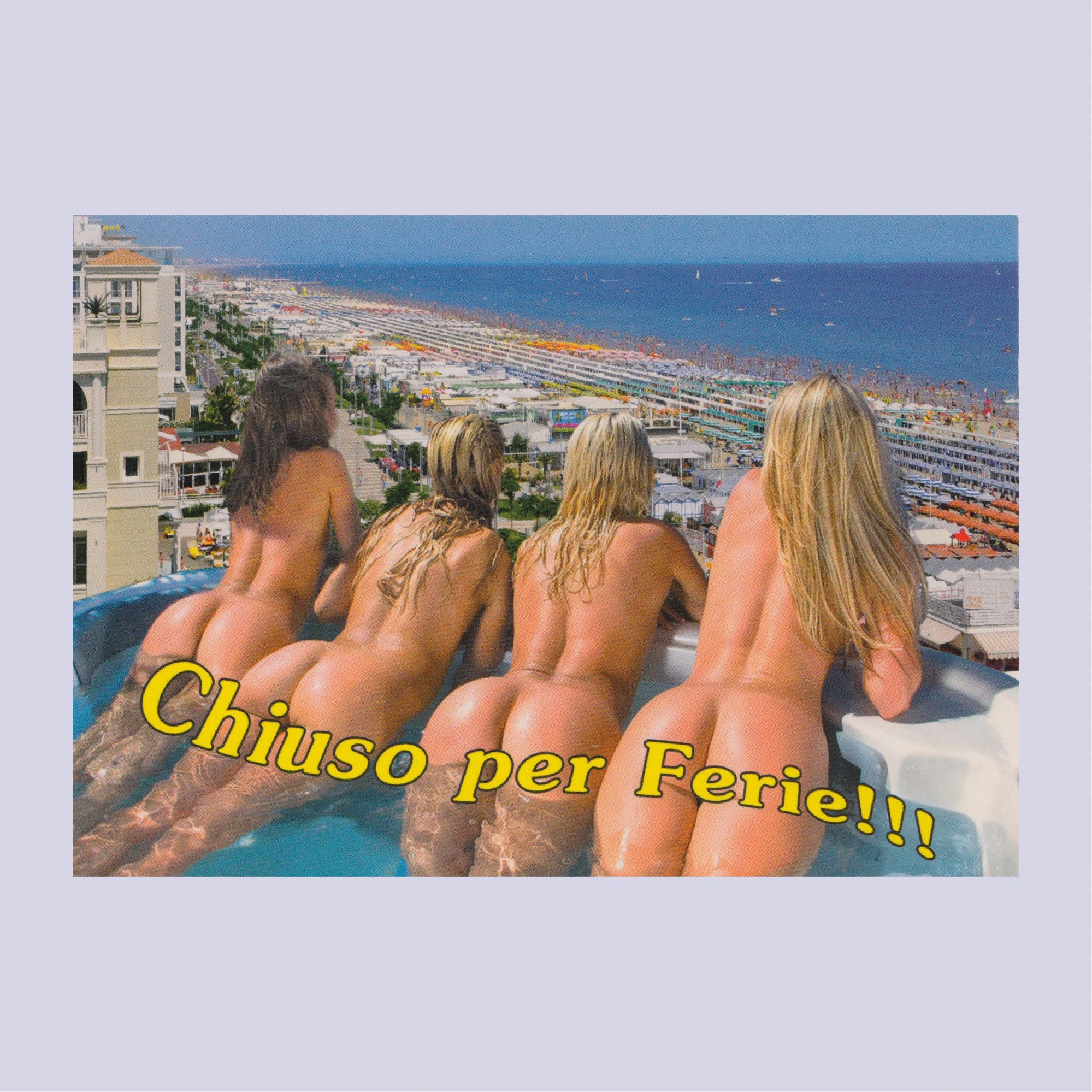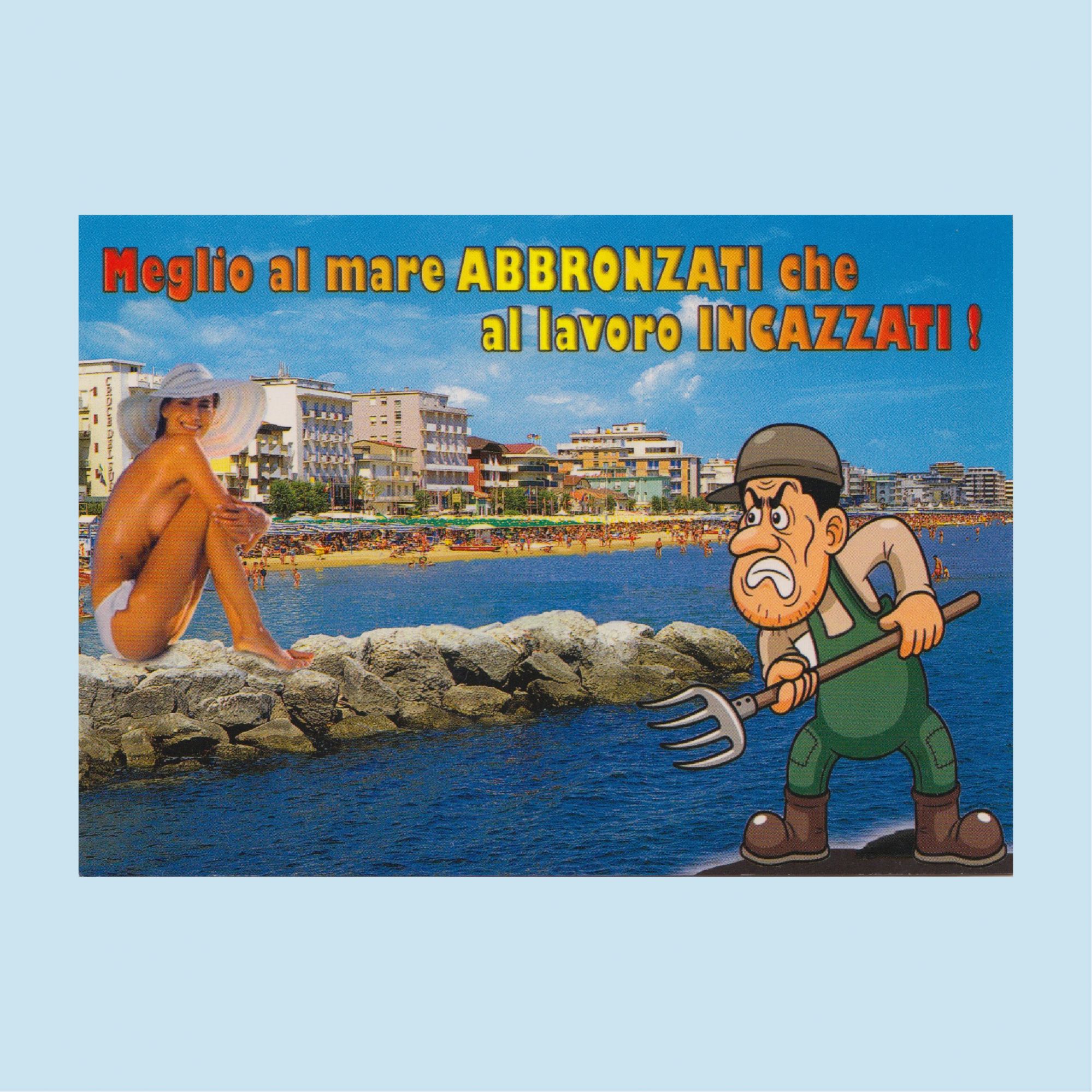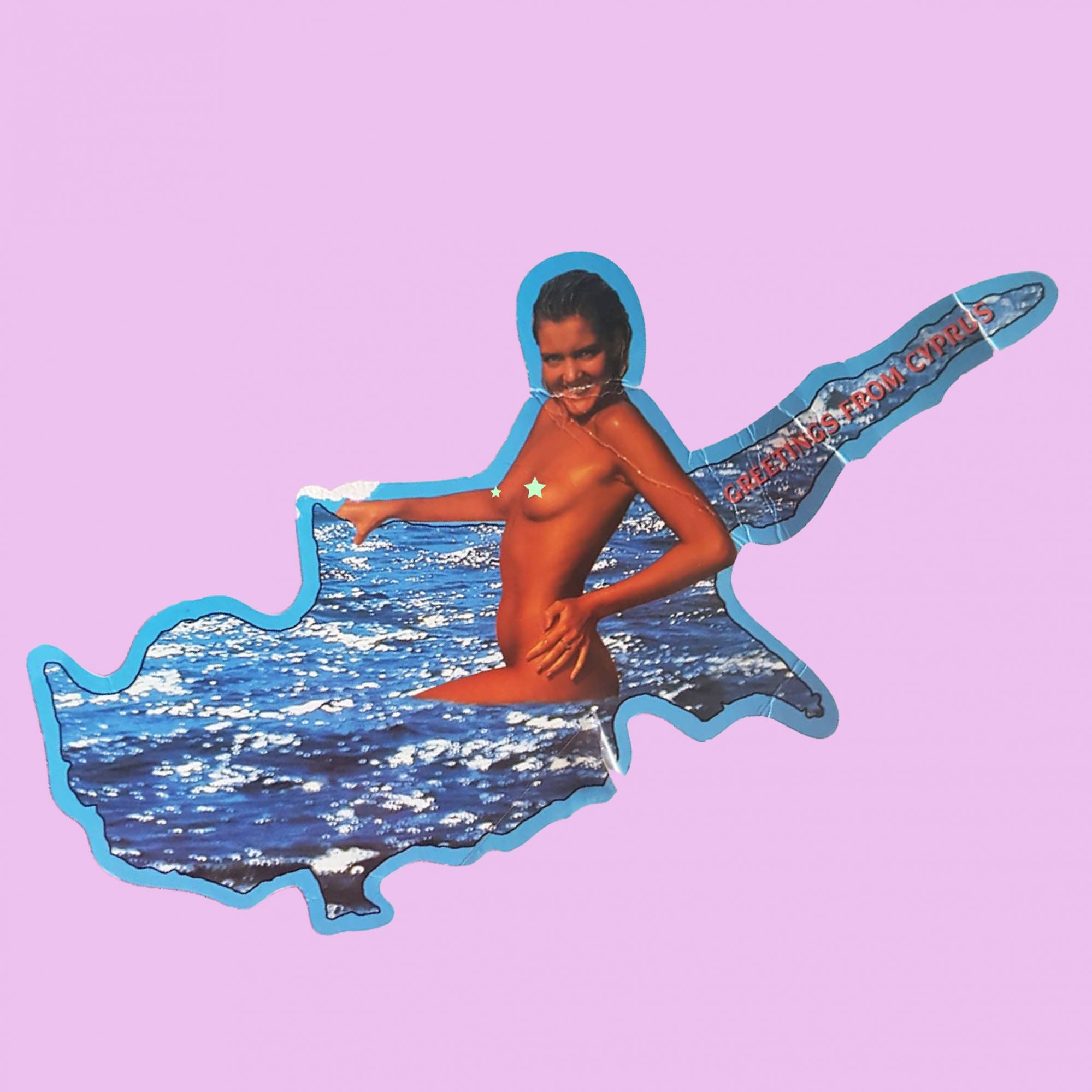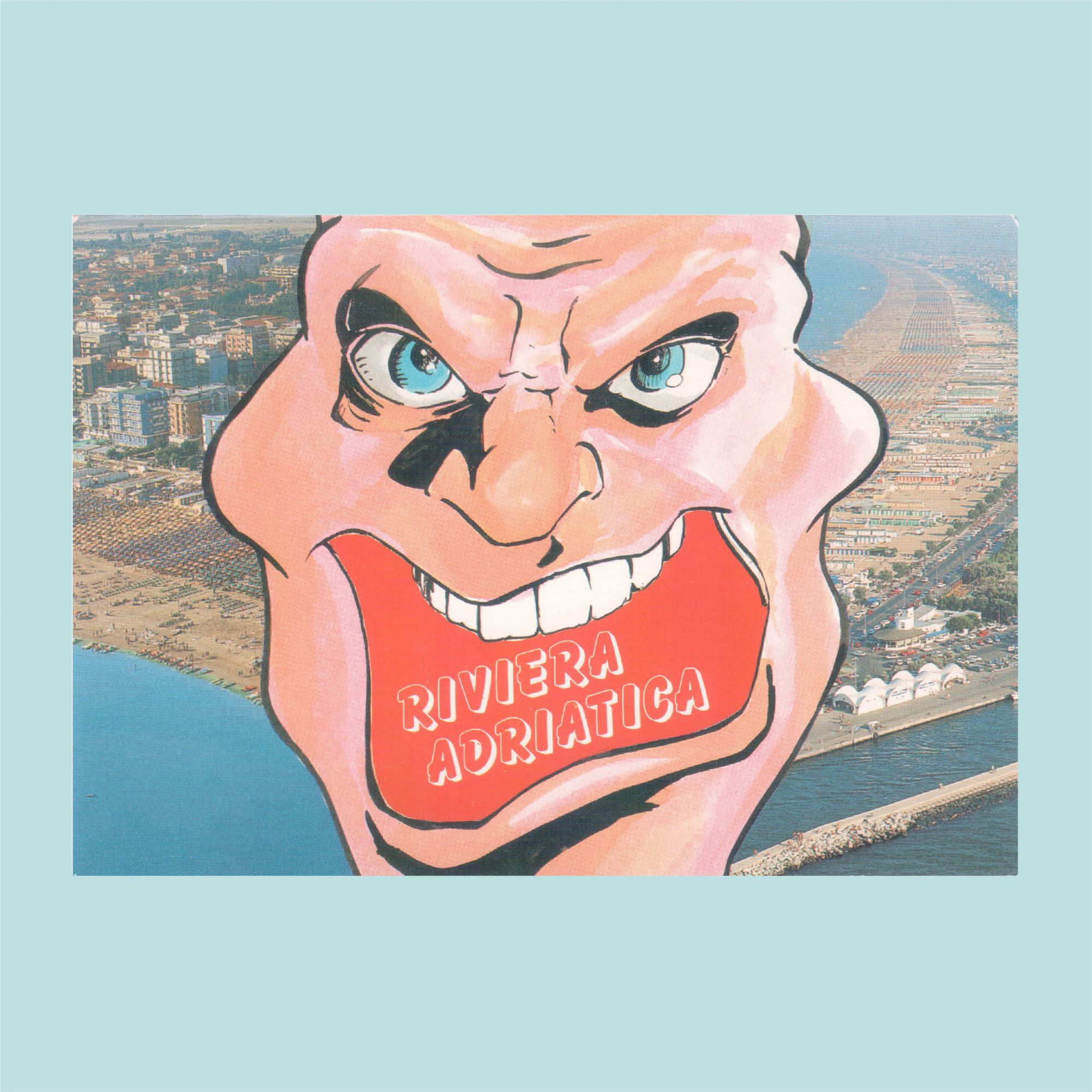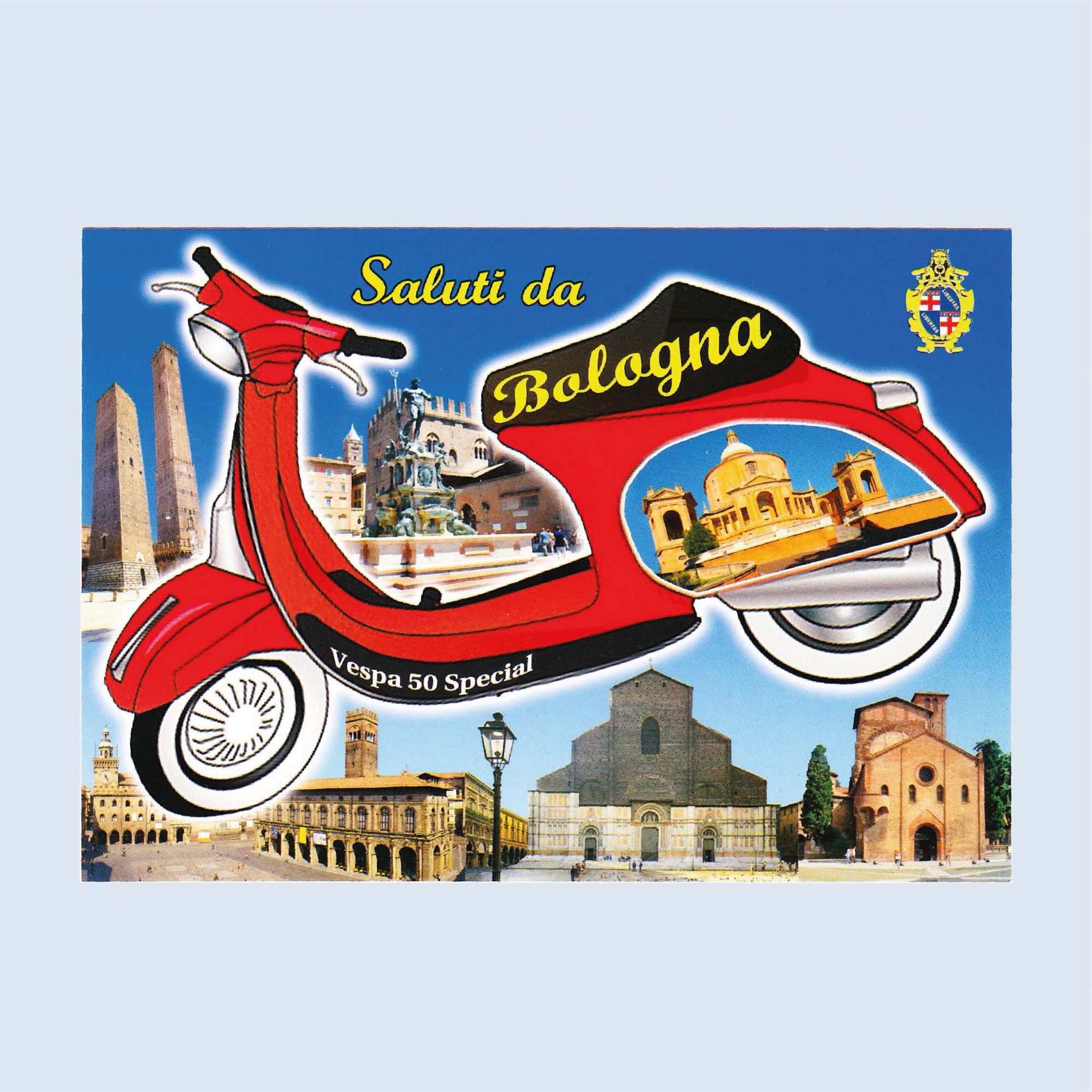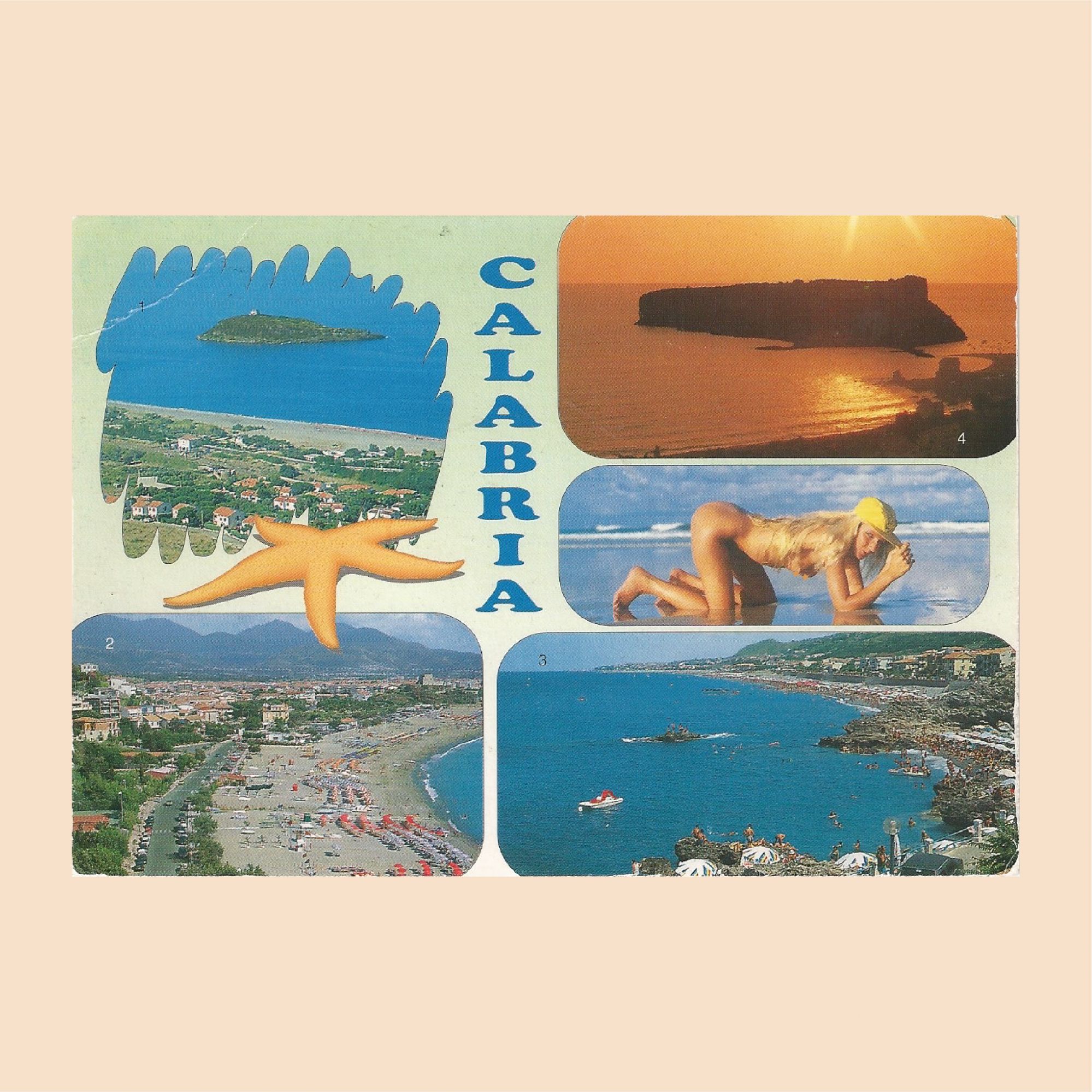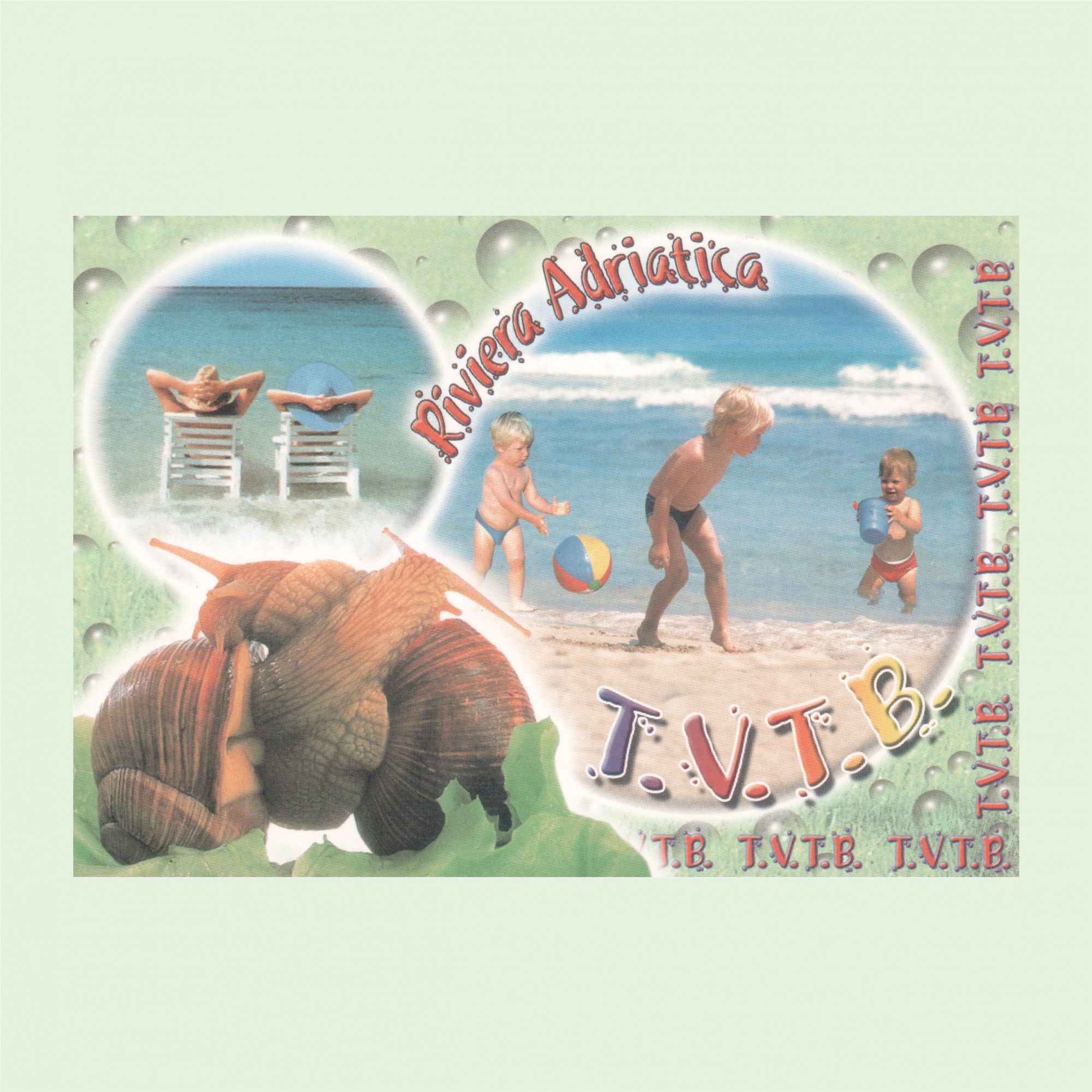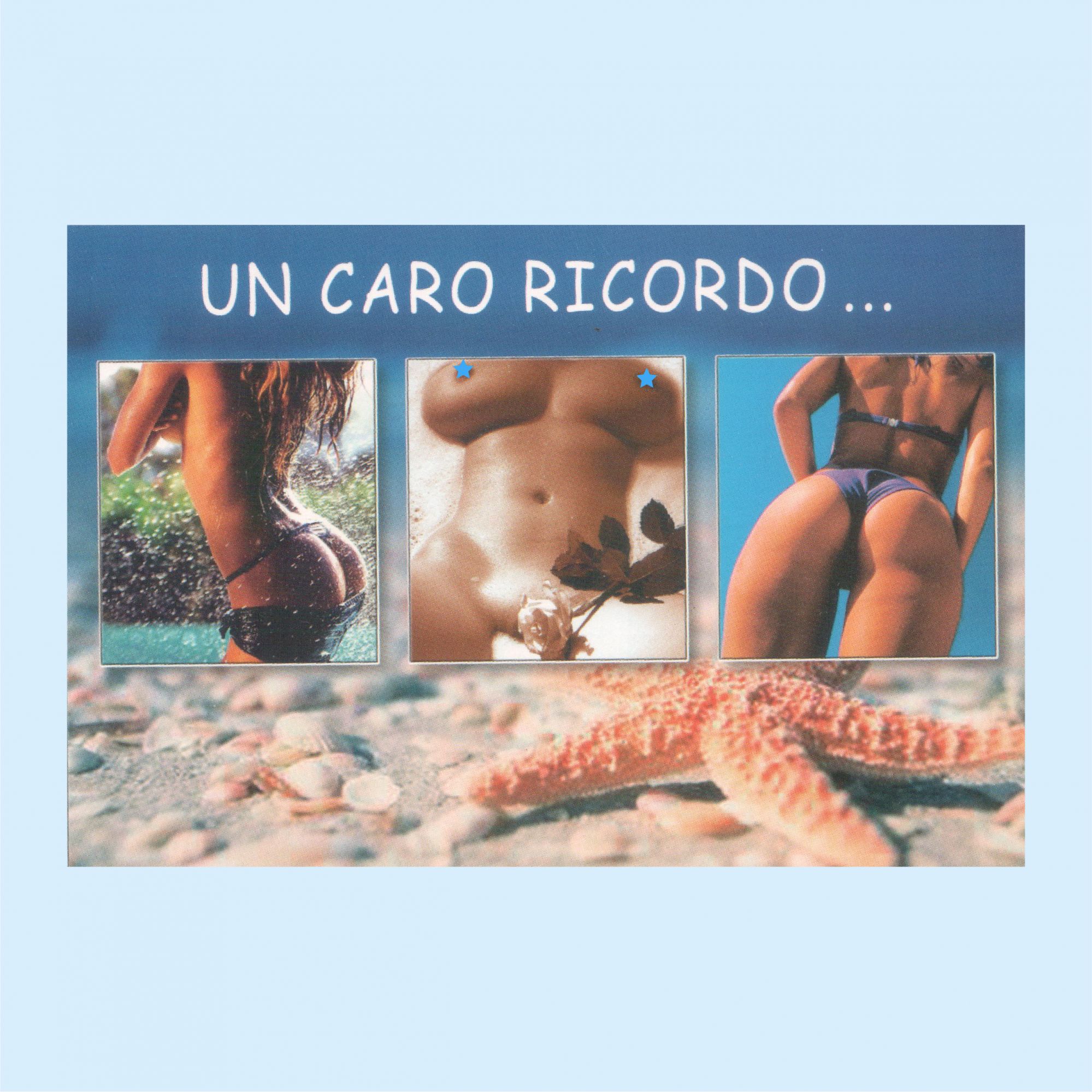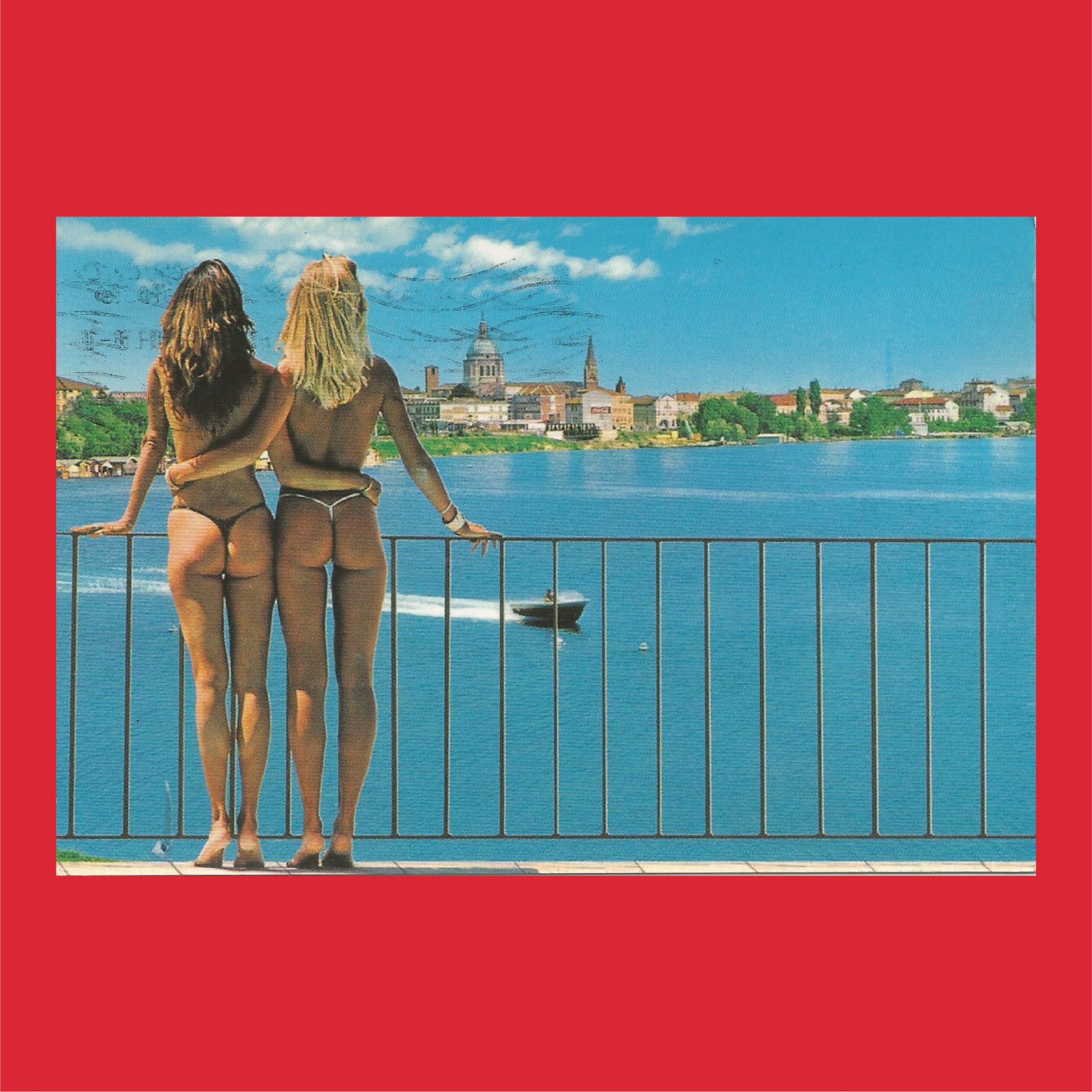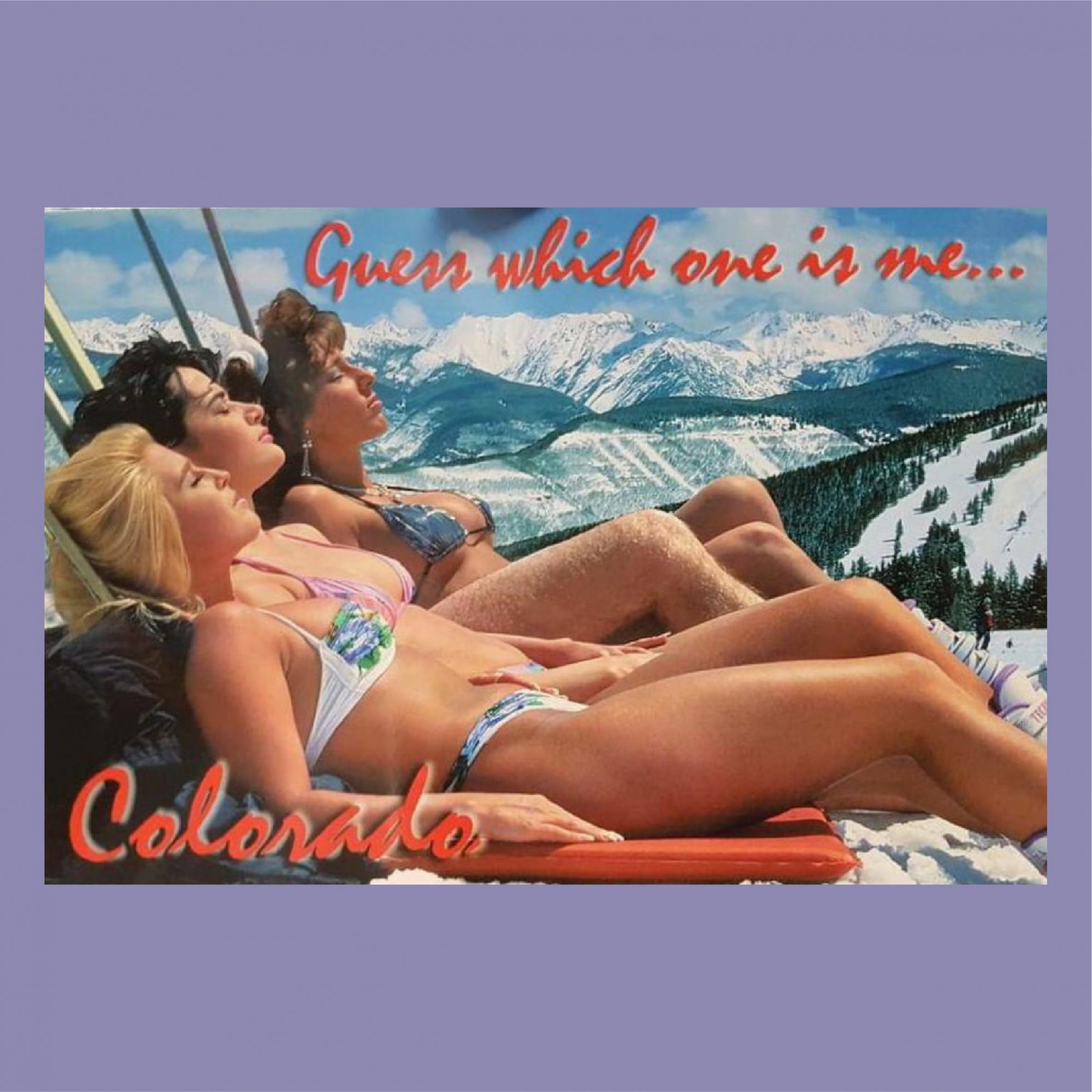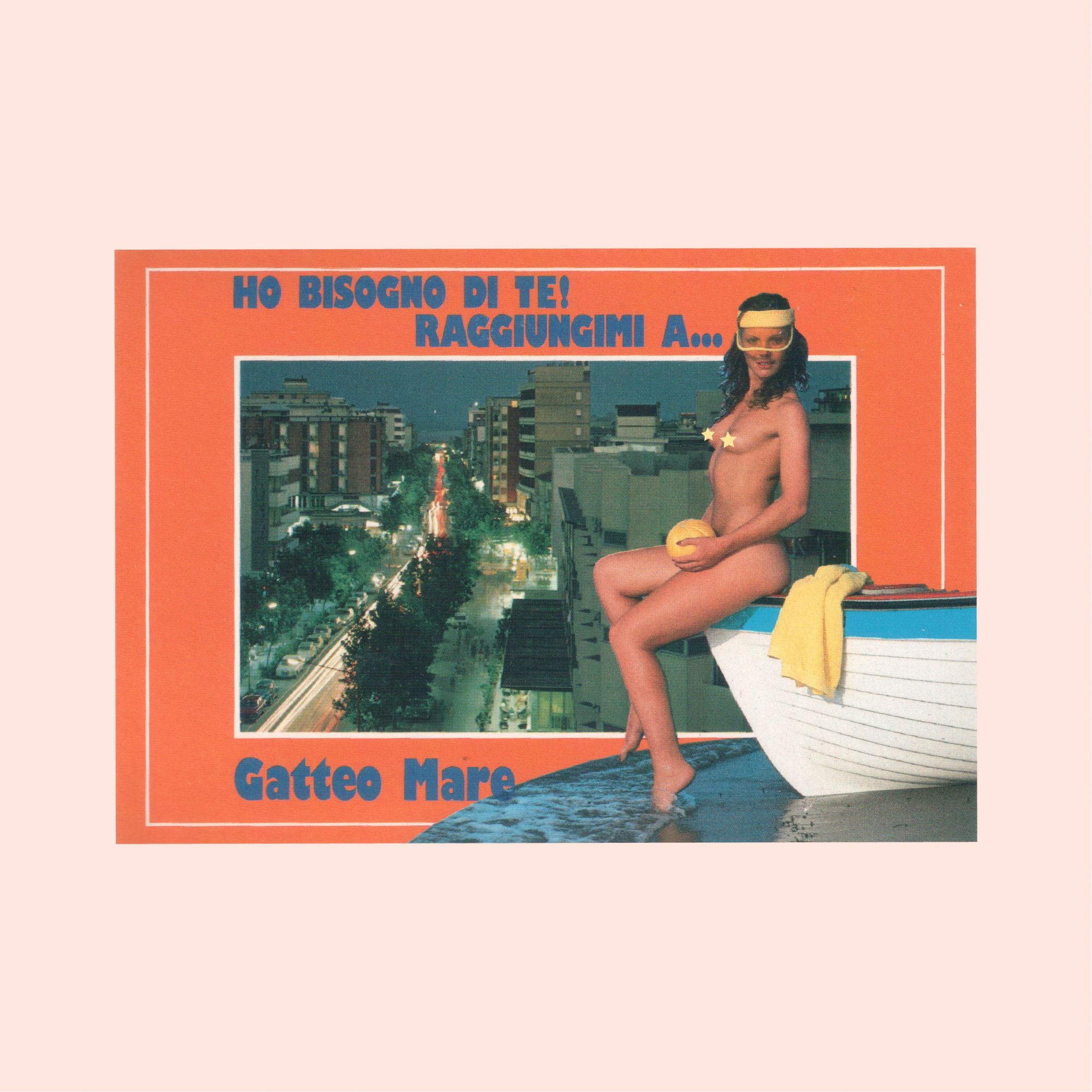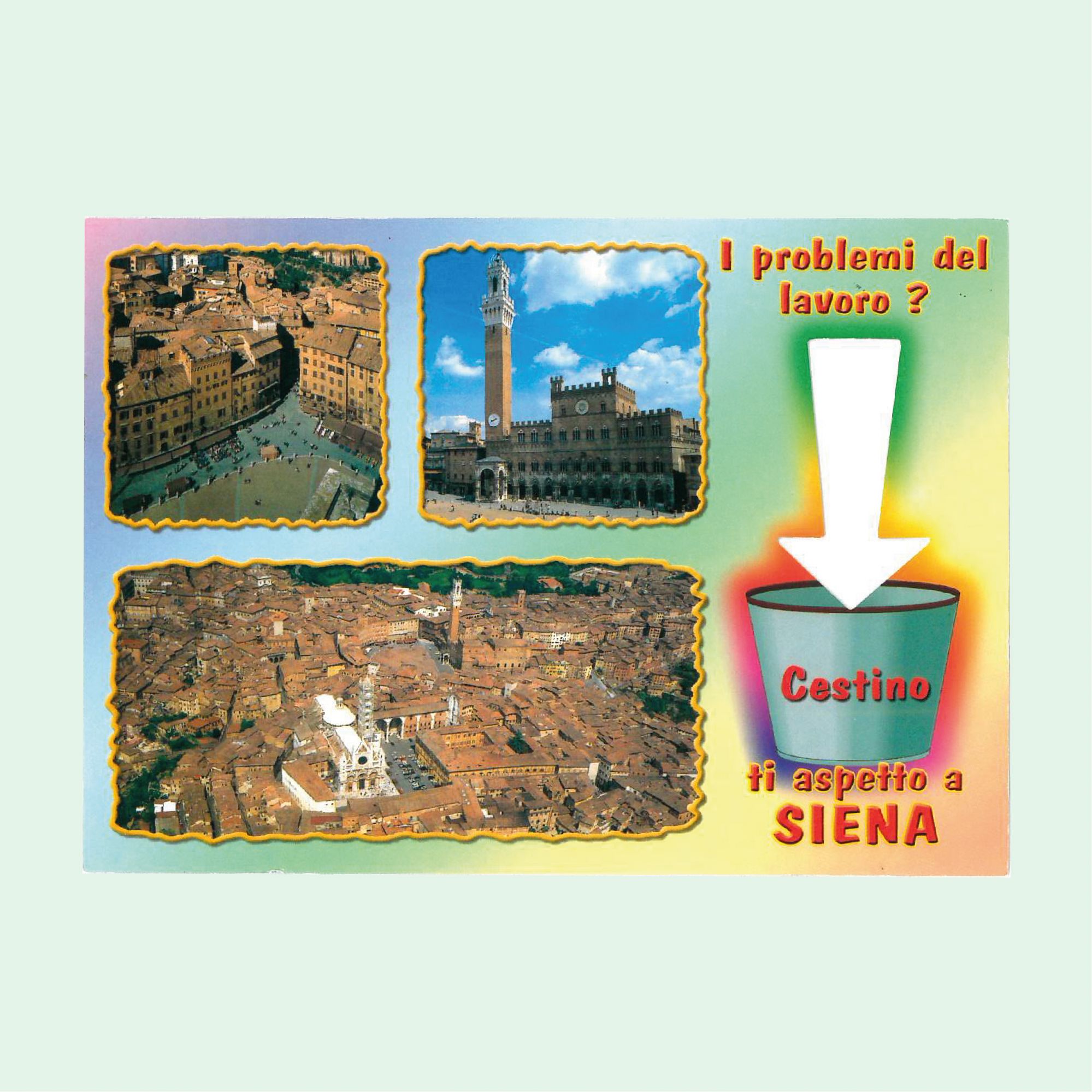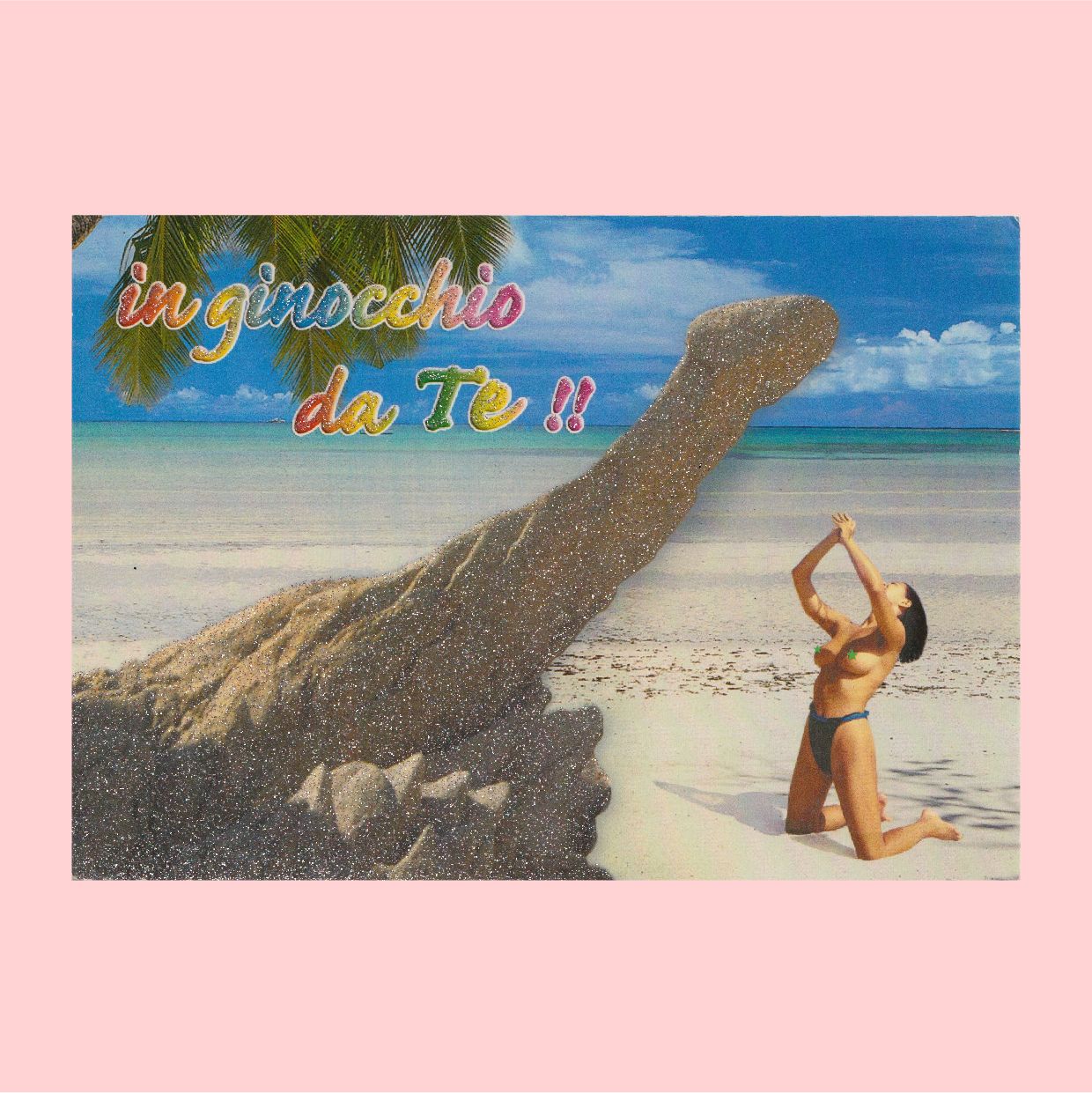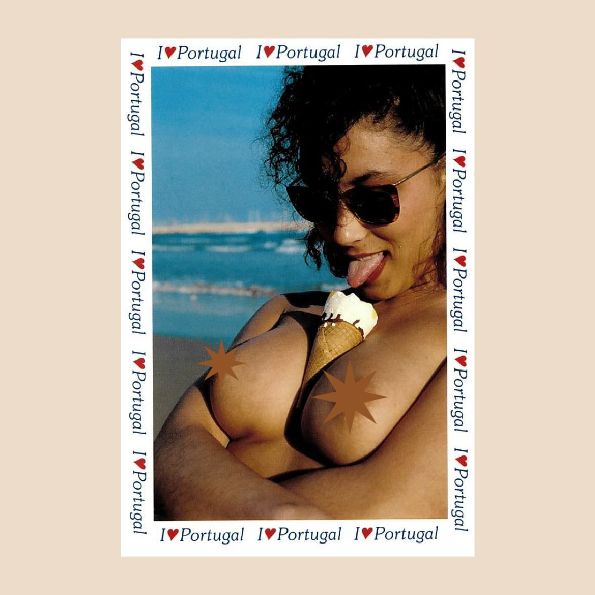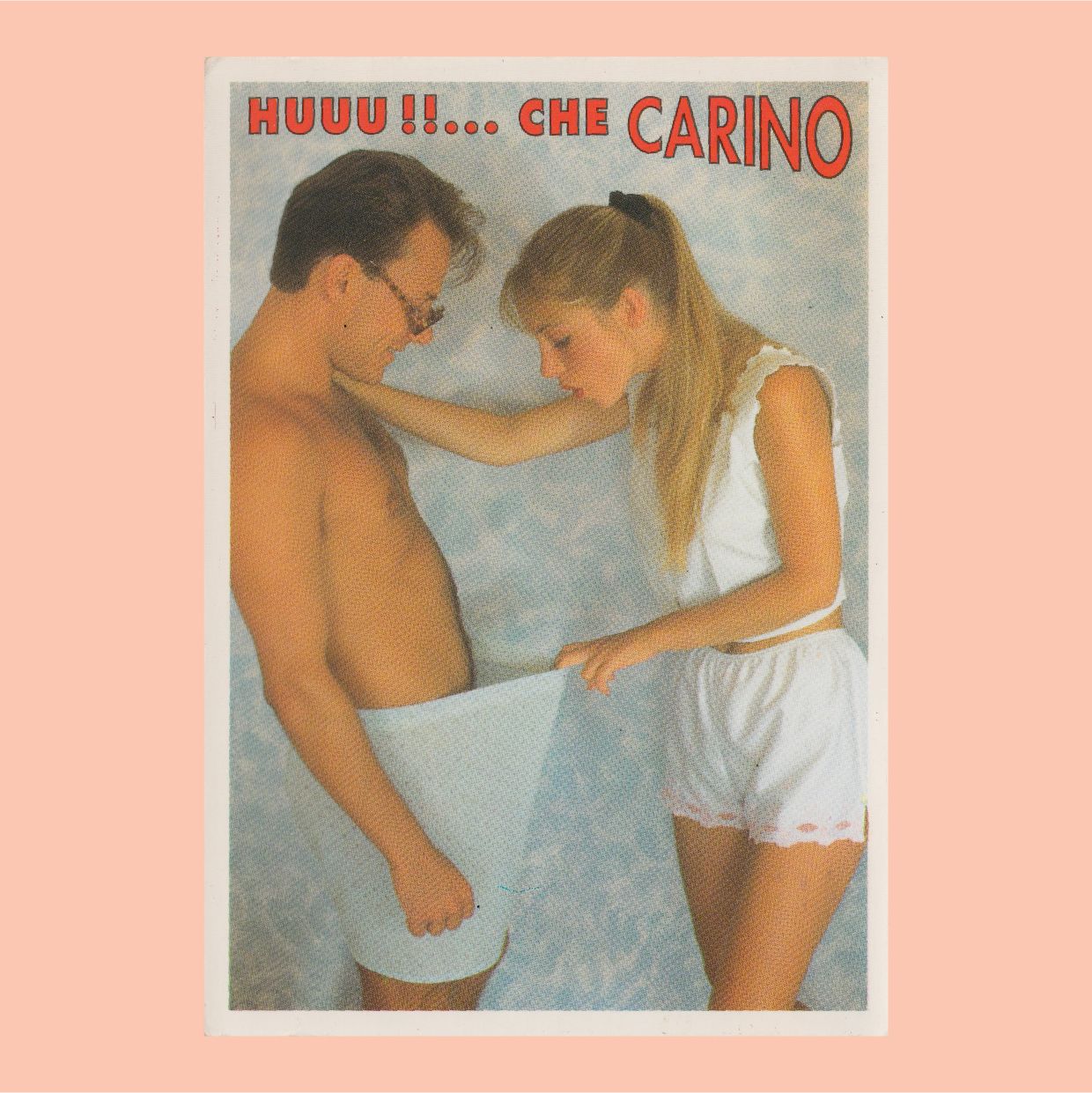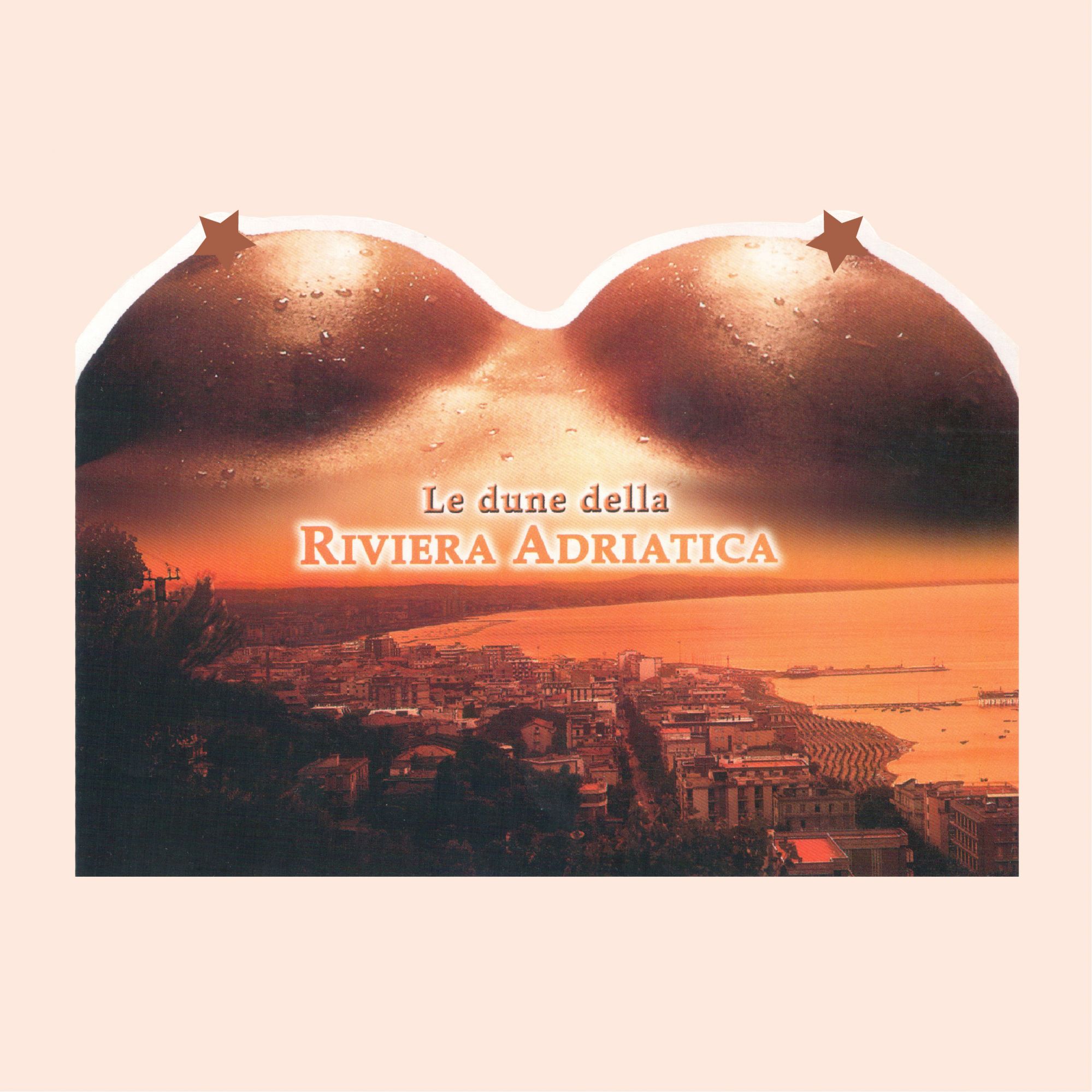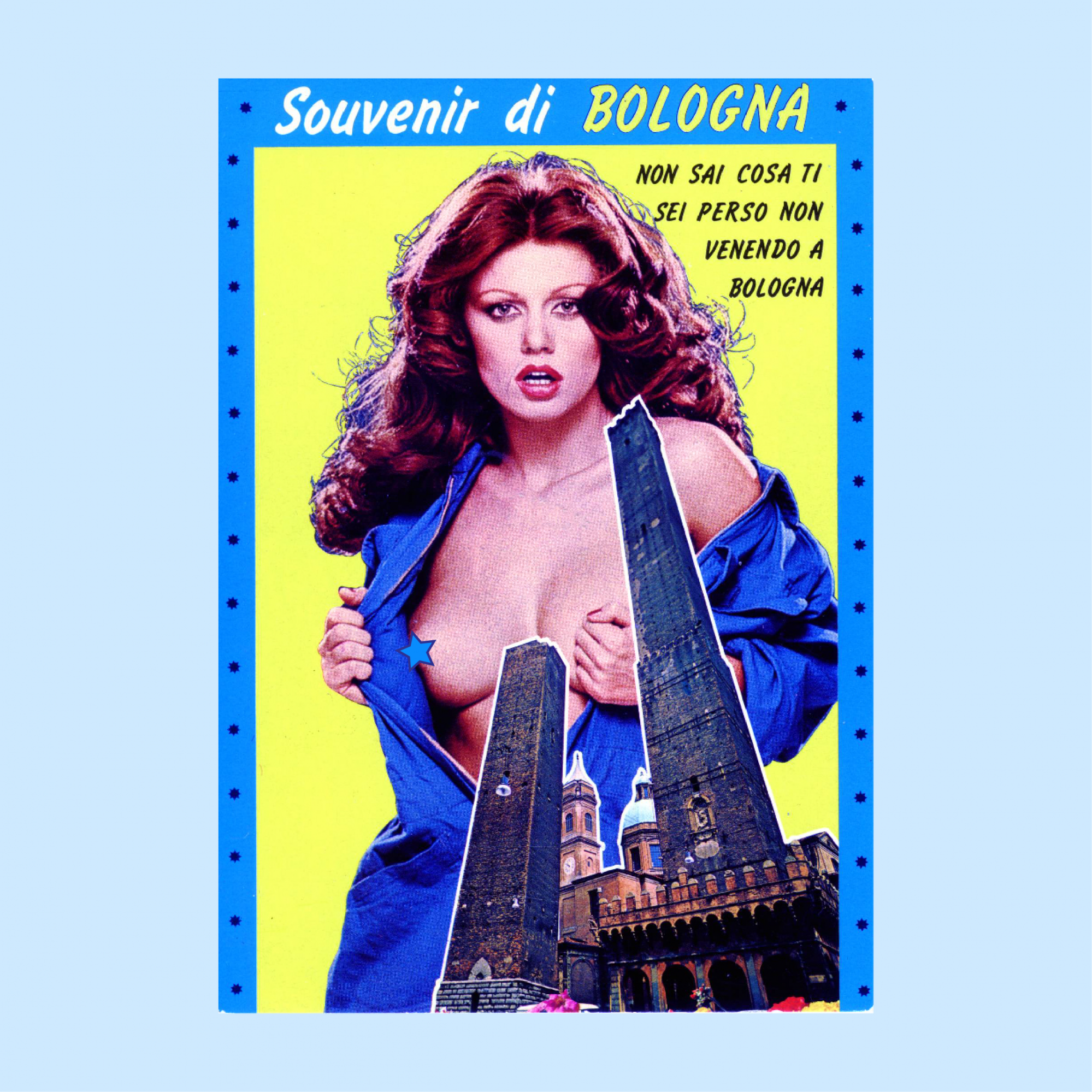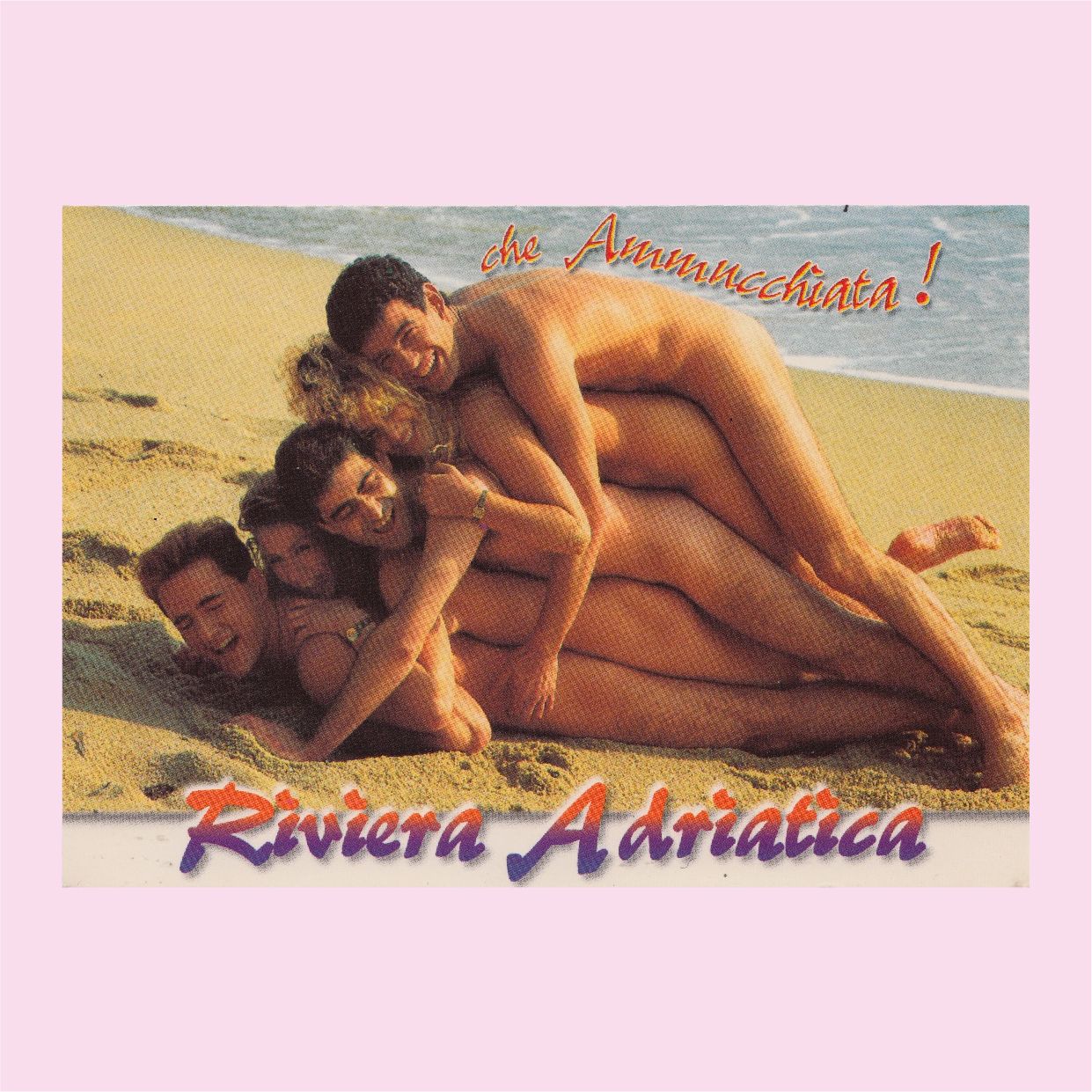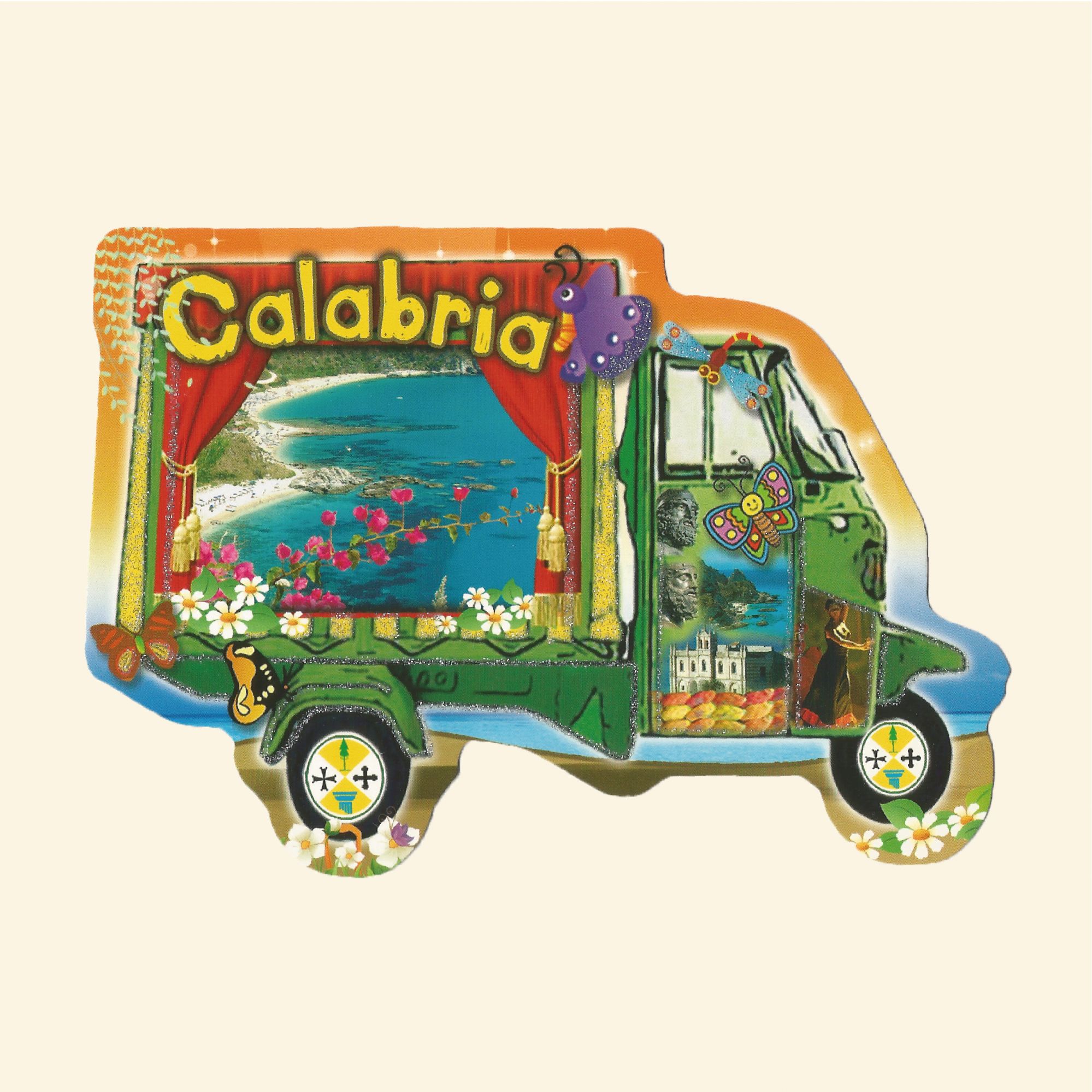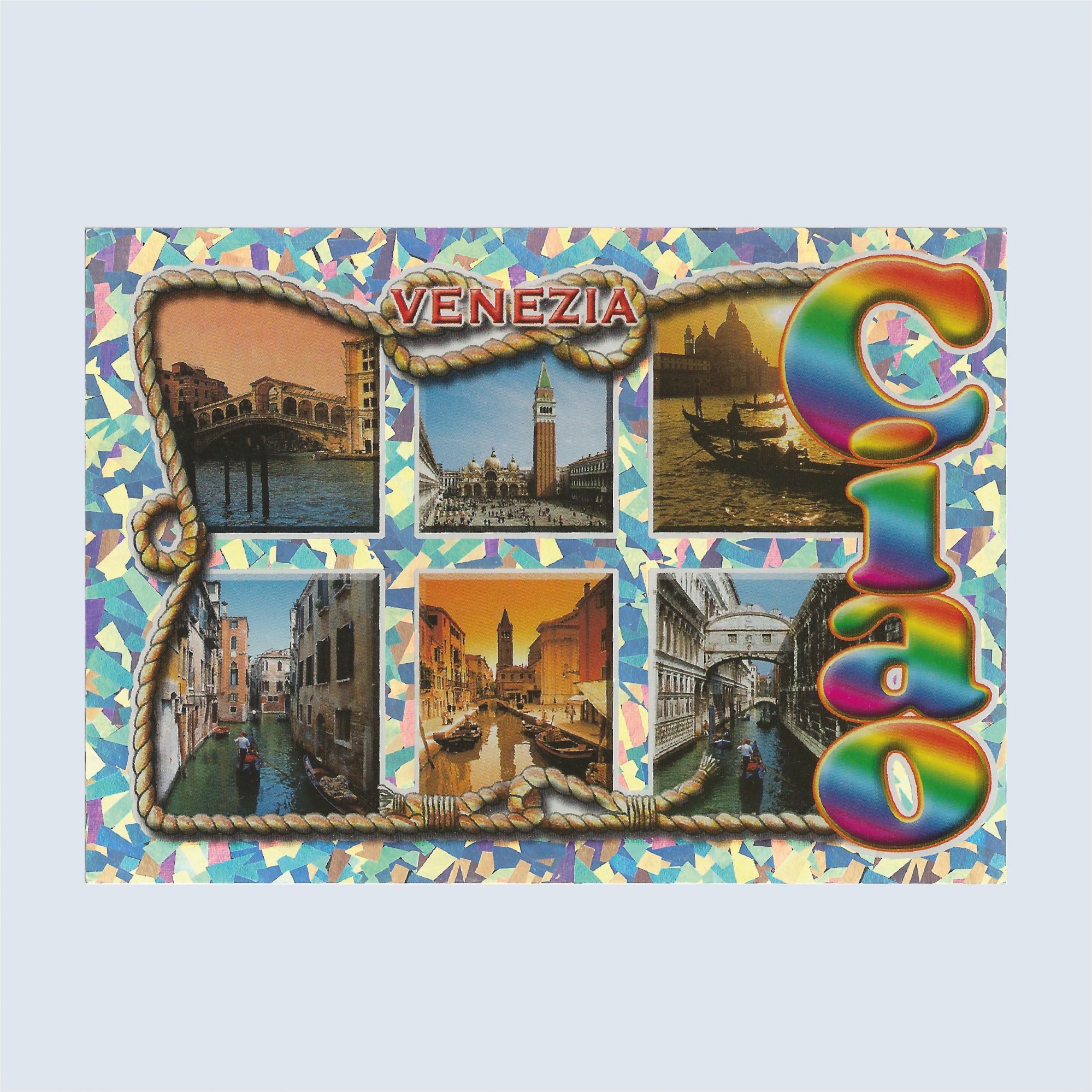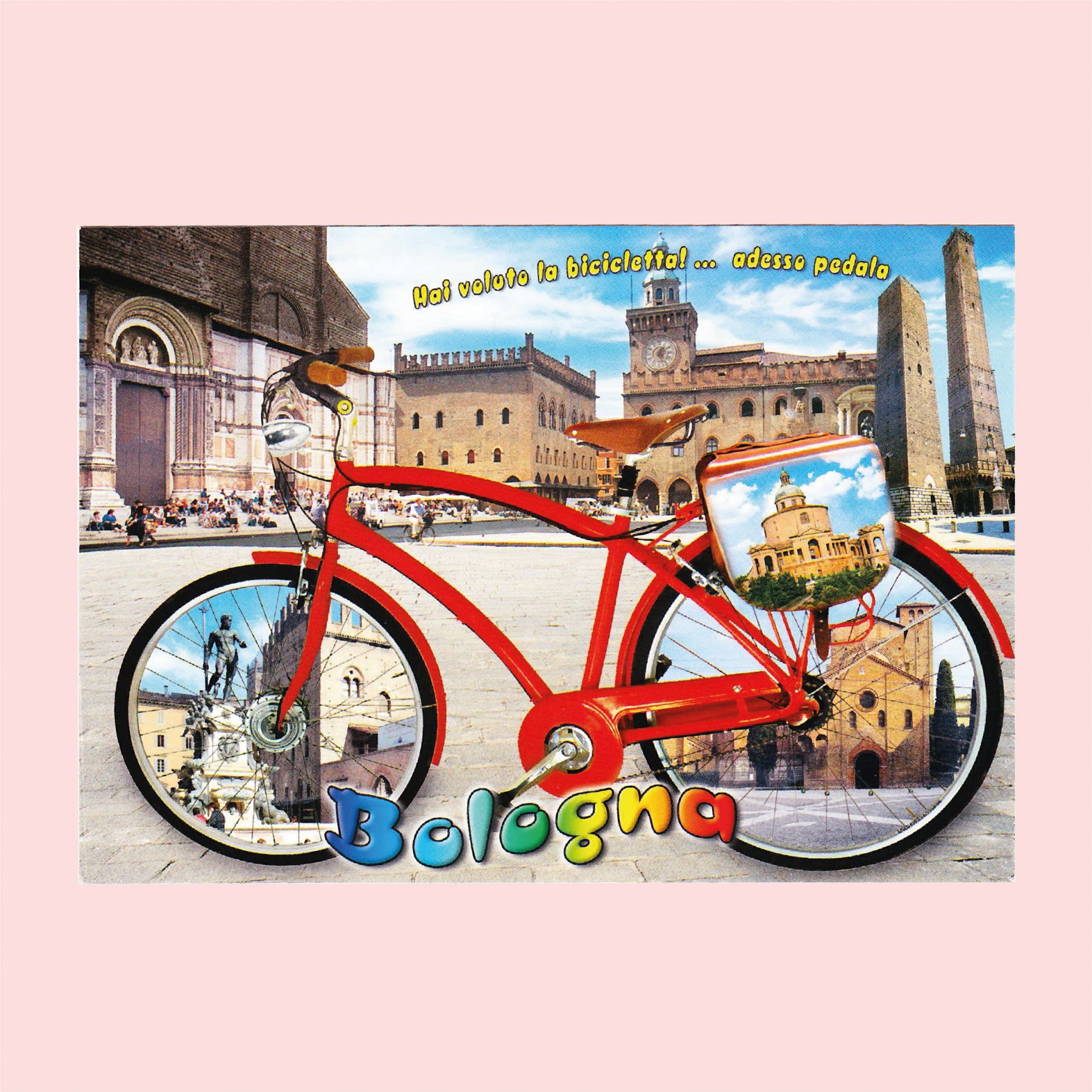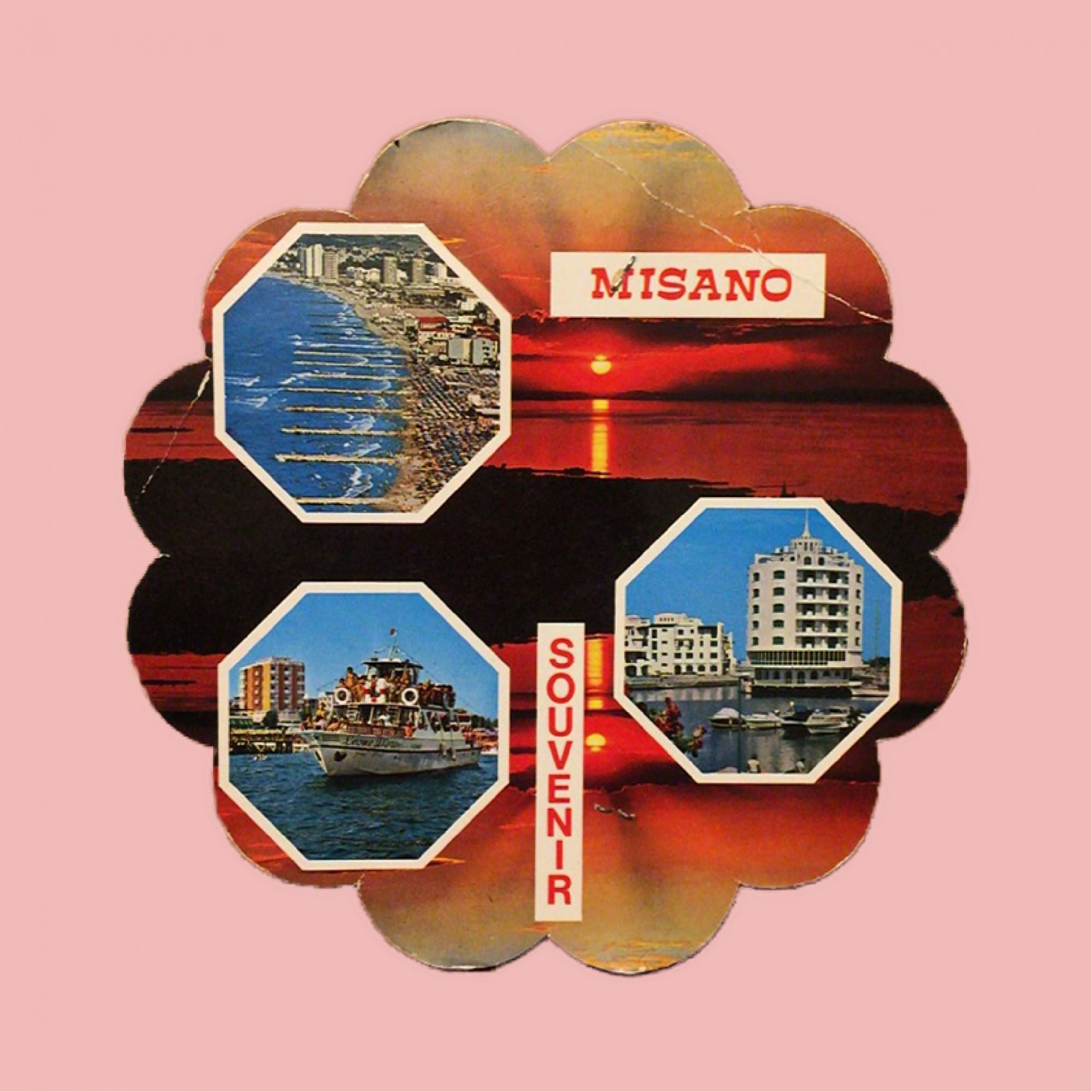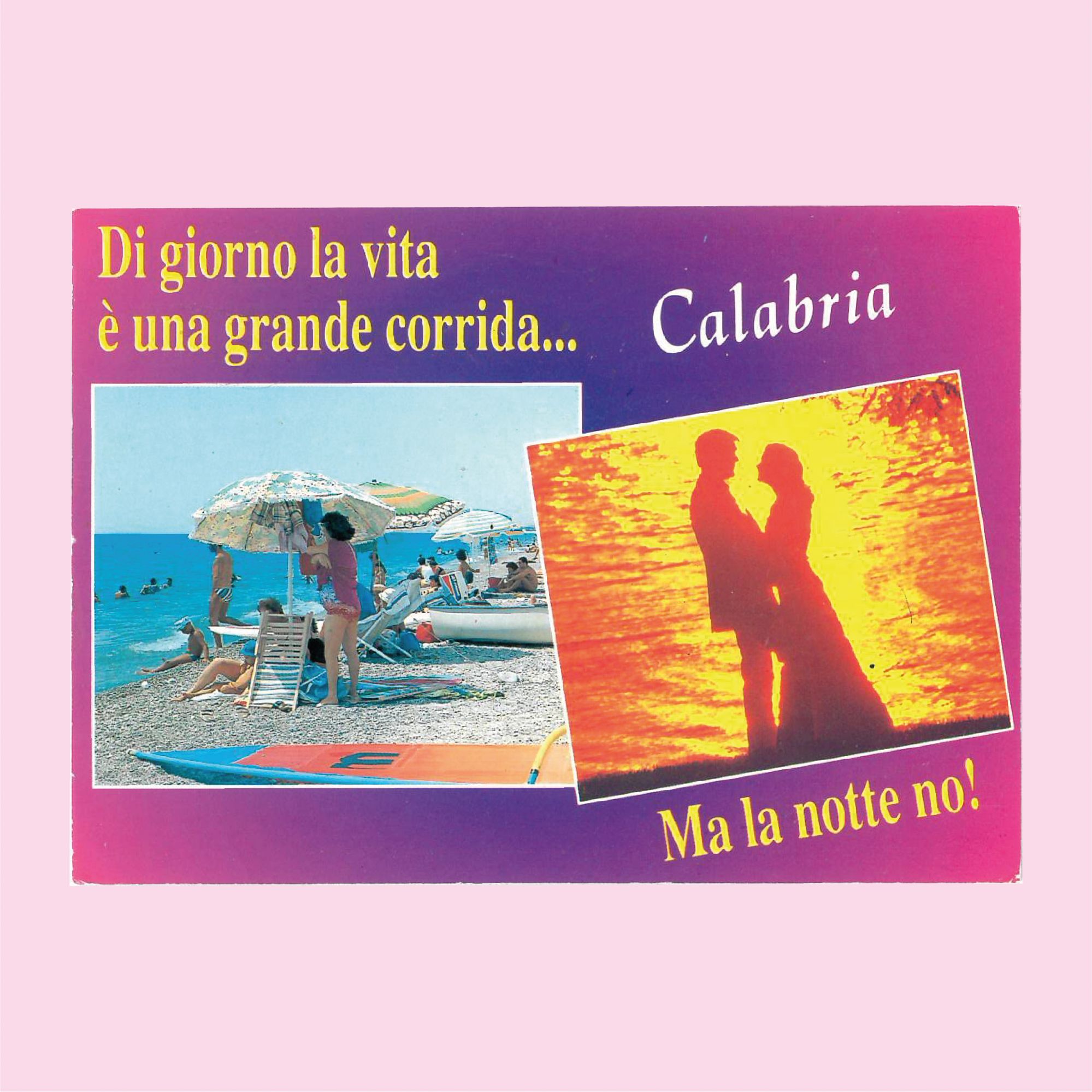
The Italian summer portrayed in vintage postcards The Instagram account collecting the most trash postcards from the Eighties to today: @cartoleena
Before WhatsApp and the Stories that destroy themselves in 24 hours on Instagram, every time you went on vacation there was only one thing to do: send a postcard. Sometimes simple formalities, other times essential to tell friends about the first summer crushes, postcards have accompanied the summers of many generations, from the Eighties to the early 2000s. At the dawn of the new millennium, there was a particular kind of postcards that found its peak: one of ugly, trashy postcards, depicting naked people in unequivocal positions (especially women), glued in kitsch patchwork and embellished with writings in glitter. Who doesn't remember the classic "Saluti dalla Riviera Adriatica" or "Chiuso per ferie"?
All these trash postcards have almost disappeared in recent times, but for some years now on Instagram there is a profile that is committed to collecting them: @cartoleena, managed by Lorenzo Marchionni (@loremarchionni), who from 2016 to today it has already published more than 250 examples.
The intuition of the project was born in all respects from a circle that closes," Lorenzo told nss magazine; "I have always had a great passion for the 'ugly', and the visual culture of the Italian postcard (especially the vintage one) seems emblematic in this regard. The spark was triggered during a semiotics and image theory course that I was lucky enough to attend during my university studies. I discovered a new and incredible methodology, solid and convincing, to analytically observe the visual objects that surround me. From there I did 2 + 2 = semiotic analysis of junk postcards.
In addition to sharing the postcards, in fact, the profile makes a semiotic analysis of each of them: the results are hilarious, a spite of some censorship problems. In fact, whether they were exposed in tobacconist's or at the stationer's shop, those postcards also have been the first approach to nudity and a very light form of pornography, in particular for many millennials.
Censorship is central. Initially I was a little reluctant to publish content that reported erotic or simply naked images; I often asked myself what was the right thing to do. Excluding the theme of the nude, however, the context of the postcards seemed lame and therefore I decided to publish without brakes anyway (through the sad intervention of the censorship, applied through little stars). Obviously the pleasure is to preserve the visual integrity of every image I publish, but Instagram is not a democratic tool.
Postcards are an ancient tradition. The custom of sending messages or greetings on decorated cards dates back to the Renaissance period, while the first examples of postcards illustrating events of historical or tourist interest are identified starting from 1870 in Germany (where they were called "gruss aus", literally "Greetings from"). The tradition arrived in Italy in 1855, where postcards were renamed "postcards illustrated by the Government" and reached their peak in the 1950s and 1960s, in the midst of the economic boom, becoming the symbol of the birth of mass tourism.
I wouldn't call my selection vintage," concludes Lorenzo; "The images of the postcards undoubtedly respond to the stylistic and cultural paradigms of the time to which they refer, but this does not mean they are 'nostalgic images': each postcard has its theme. The concept of historical memory is undoubtedly a transversal theme to this project, but there is no need to go back in time to find postcards perfectly in line with the traditional trash taste that we know wel. In the Adriatic Riviera (perhaps the most fertile area ever for the masterpieces we are talking about) you can find beautiful specimens even today.











































